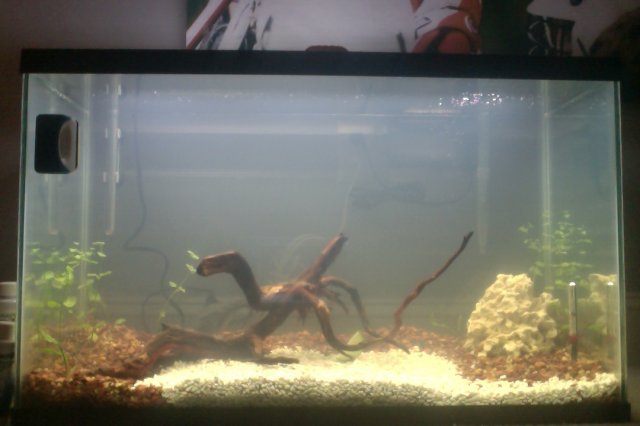I personally would not have a lone angelfish. I know some do, but this fish is by nature a shoaling fish that lives in small groups and they have a very defined hierarchy within the group. There is insufficient space in a 29g for a group obviously.
And I agree on the corys, this is another shoaling fish and must have several, no less than five, but more is preferable. They are very social fish. You can have the same species, or you can have mixed species in which case I would aim for 3-5 of each species. You've space in a 29g for 12-15 corys easily in addition to upper fish.
With live plants I do not recommend adding any form of ammonia but I would add a few fish. Corys are not good as the first fish though, so consider upper fish. Once you have more plants and some floaters, this will work fine. Plants need nitrogen, and most aquarium plants prefer ammonium as their source. Fish produce ammonia via respiration, plus ammonia occurs from the breakdown of organics (waste, etc), and plants are in fact faster at grabbing this than bacteria, though some gets past them to the bacteria. Plants convert ammonia into ammonium; in acidic water this occurs automatically, and ammonium is basically harmless. With sufficient plants and very few fish, gradually adding fish, this is the safest and easiest way to cycle a new aquarium.
As for plants, for floaters, Water Sprite, Water Lettuce, Frogbit, Salvinia are some. Certain stem plants grow well floating, Pennywort especially. For substrate-rooted plants, you should have good luck with Amazon swords. The pygmy chain sword or regular chain sword would be ideal, and perhaps one or two of the common Amazon swords which grow much larger. If you are looking at cruising rather than active swimming fish, as you seem to be, filling the space with plants is ideal. If your water is moderately hard (the GH) Vallisneria will do well. I don't know what your light is, but it looks to be sufficient for what I've mentioned. Stem plants being faster growing also need more light and nutrients, so I would tend to stay away from more of those.
Byron.







